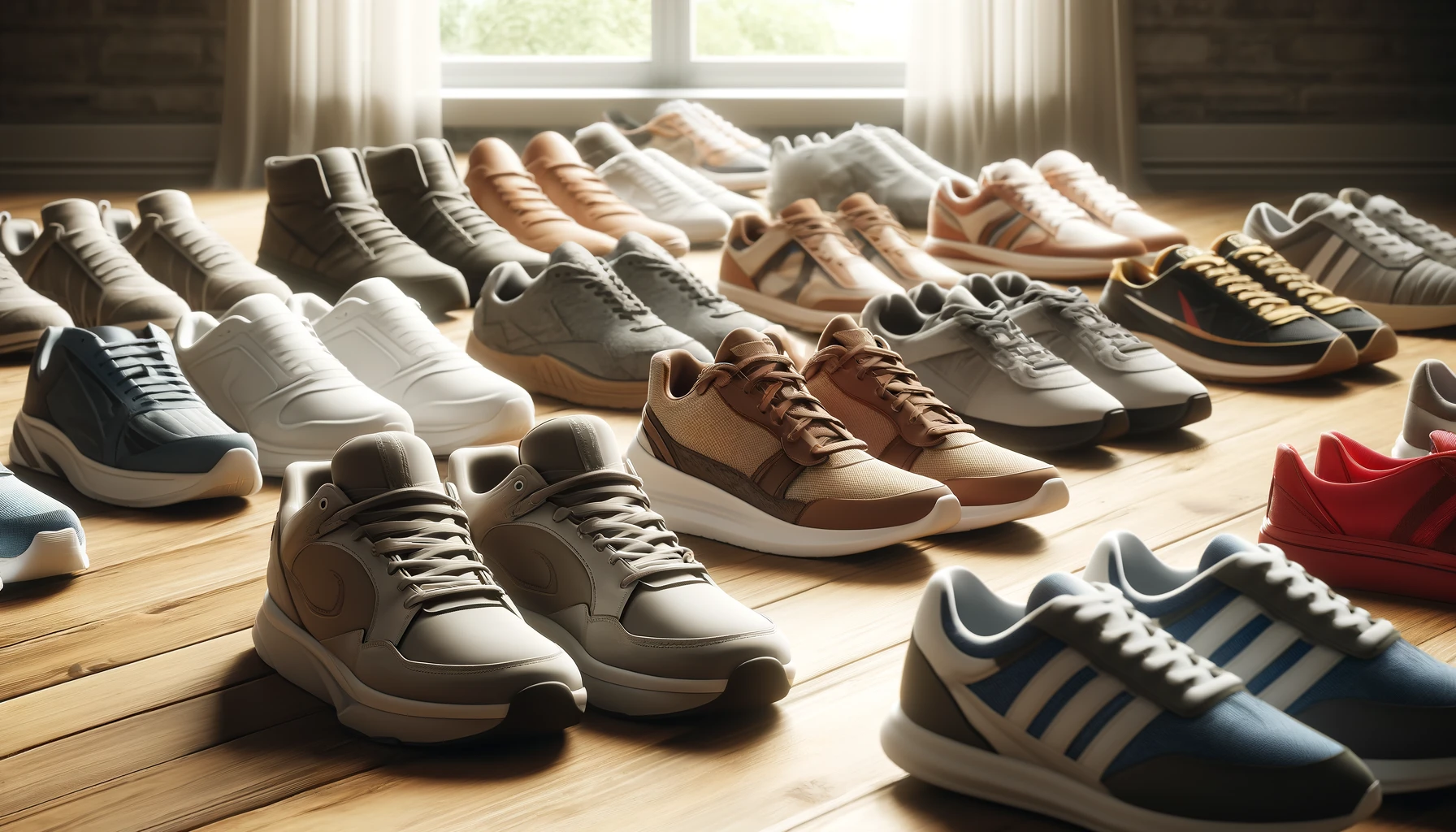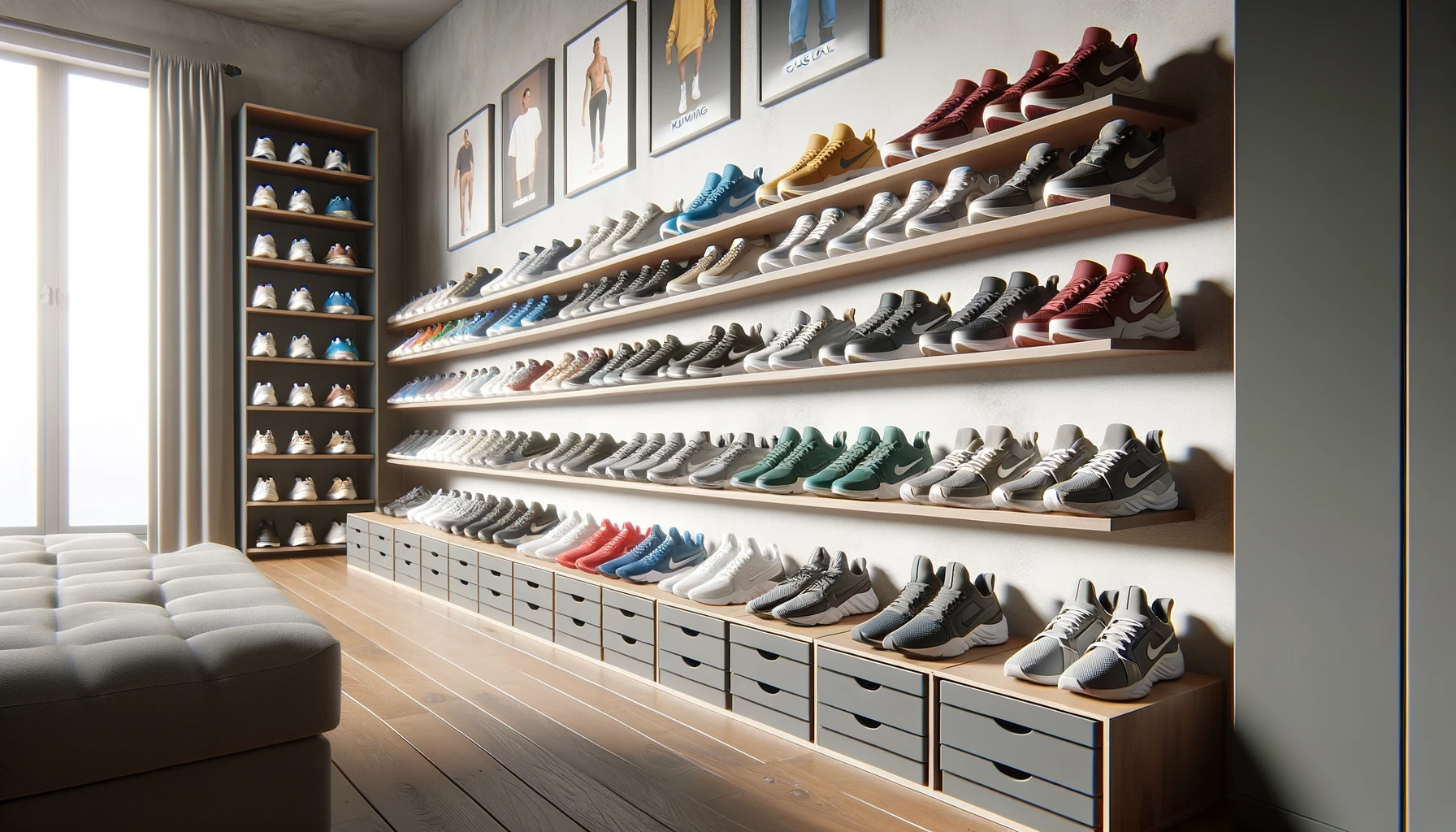Sneaker Sizing 101: How to Find Your Perfect Fit
It is an important topic for everyone, whether you’re an avid runner, a dedicated gym-goer, or someone who values comfort throughout a busy day.
Sneaker Sizing
A common misconception is that all sneakers fit the same across different brands or models, but this is far from the truth. Each brand may follow slightly different sizing standards, which are further influenced by the specific design and materials used.
Measure Your Foot Length Properly
The first step in finding the right sneaker size is to measure your foot accurately. According to experts at Zappos, the best way to do this is by standing on a piece of paper, tracing around your foot, and then measuring the longest point from heel to toe with a ruler. This measurement is your true foot length and serves as the base for finding your correct shoe size.

Understand Brand Variations
It’s essential to consider that different brands might have variations in size. For instance, a size 10 in one brand may fit differently than a size 10 in another. This variability is why trying on different brands and models is critical to understanding how their sizing works in relation to your foot measurements.
The Impact of Shoe Lasts on Sizing
A less frequently discussed but vital aspect of sneaker sizing is the shoe last. The last is a mold around which the shoe is designed and built, and it determines the shoe's overall volume, fit, and style. Different lasts will naturally accommodate different foot shapes—some are wider at the toes, while others offer more room in the arch area. Knowing the last used in your chosen sneaker can provide deeper insights into how well it will fit your foot.
Factors to Consider
Choosing the right sneaker is not just about length. Several other dimensions and characteristics affect how a shoe fits.
1. Width Options
Sneakers come in various widths, ranging from narrow to extra-wide. Standard sizes might not accommodate every foot width, which is why brands like New Balance and Brooks offer wide and extra-wide options. If your feet are broader or narrower than average, paying attention to the width availability is crucial.
2. Arch Support
Your arch type significantly influences the comfort and support you need from a sneaker. Whether you have high arches, flat feet, or neutral arches, the right shoe should provide appropriate support. Specialized stores and websites often offer guides on selecting shoes that cater to different arch types, enhancing both comfort and function.
3. Toe Box Space
The toe box should give your toes enough room to move freely without restriction, which is vital for balance and proper gait. Verywell Fit suggests leaving about a thumb’s width of space between your longest toe and the shoe's end to ensure sufficient room. This space prevents cramping, blisters, and other discomforts during movement.
4. Heel Fit
The fit around the heel must be snug but not tight. An ideal heel fit will lock in place and not slip as you walk or run. Slippage can lead to blisters and instability, which could cause ankle or foot injuries. Testing the heel fit by walking or even jogging slightly in the store can help determine if the fit is right.
Tips for Finding Your Perfect Fit
Tip 1: Measure Your Feet Regularly
Your foot size and shape can change over time due to factors such as aging, weight fluctuations, and hormonal changes. Foot Locker recommends measuring your feet at least once a year to ensure your shoe size information is up-to-date. Always measure both feet, as it's common to have one foot slightly larger than the other. Use the measurements of your larger foot when choosing shoes.
Tip 2: Try On Sneakers at the Right Time
Foot size can vary throughout the day due to swelling from walking and standing. Zappos advises trying on new sneakers in the late afternoon or evening when your feet are at their largest. This ensures that the sneakers will remain comfortable, even when your feet are at their fullest.
Tip 3: Wear Appropriate Socks
The socks you wear greatly influence how shoes fit. When trying on new sneakers, wear the type of socks you intend to use with those sneakers. This is especially important for athletic shoes, as sports-specific socks can be thicker and take up more space inside the shoe.
Tip 4: Walk Around in the Shoes
When trying on shoes, don’t just stand still. Walk around the store, and if possible, run a short distance. Pay attention to any slipping or sliding of the foot within the shoe. Also, note if there is any pinching or pressure points that could cause discomfort or blisters during actual use.
Tip 5: Know Your Environment
Think about where you will be using these shoes. Are you running on trails or walking on pavement? Different environments require different types of traction, cushioning, and stability. Trail running shoes, for instance, offer more rugged outsoles to handle uneven terrain, whereas road running shoes are designed to be lighter and more responsive for flat surfaces.
Tip 6: Use Technology
Many brands now offer apps or online tools that can analyze your foot type and recommend the best shoe for your specific needs. These tools often use sophisticated algorithms based on biomechanics and customer data to predict the best fit and style for your activities and foot characteristics.
Tip 7: Break-In Your Sneakers Gradually
New sneakers often require a break-in period to mold to the unique contours of your feet. Start by wearing your new sneakers for short periods around the house. Gradually increase wearing time as they begin to adjust to your foot shape. This approach can prevent blisters and discomfort that often come from wearing new shoes for too long, too soon.
Tip 8: Rotate Your Sneakers
If you are frequently active or wear sneakers every day, consider having multiple pairs to rotate. This practice gives each pair a chance to air out and decompress foam and other cushioning materials between uses. Rotating shoes can also prevent premature wear and tear on any single pair, extending the overall lifespan of your sneaker collection.
Tip 9: Keep Them Clean
Keeping your sneakers clean is not just about aesthetics; dirt and grime can degrade the materials of your sneakers over time, affecting both their fit and functionality. Clean your sneakers regularly based on the manufacturer’s instructions. Typically, a soft brush or cloth and a mild soap are sufficient for removing dirt. For tougher stains, specialty sneaker cleaners are available that can handle sensitive materials without causing damage.
Tip 10: Store Sneakers Properly
Store your sneakers in a cool, dry place away from direct sunlight, which can degrade the materials and fade colors over time. Avoid storing sneakers in plastic bags or tightly sealed boxes which do not allow for air circulation; instead, opt for a breathable shoe bag or leave them in an open space where air can circulate freely.
Tip 11: Regularly Assess Fit and Comfort
Regularly reassess the fit and comfort of your sneakers, especially if you experience any new pain or discomfort in your feet, ankles, or legs. Sometimes, what was once the perfect fit can become less ideal over time due to changes in your foot structure or the natural wear and tear of the shoe.

Final Thoughts
Finding and maintaining the perfect sneaker fit is a dynamic process that requires attention to detail and proactive care. By following these guidelines, you can enjoy the benefits of sneakers that fit well and support your active lifestyle. Remember, the right sneakers are an investment in your health and well-being, and with the right care, they can continue to serve you well long after you've broken them in.
In conclusion, understanding sneaker sizing, selecting the right fit, and maintaining your sneakers are all key components of enjoying your footwear to the fullest. Whether you're an athlete, a casual walker, or someone in between, the right sneakers can make a significant difference in your comfort and performance. Follow these tips to ensure you find that perfect fit and keep it that way.
